LIFE SUPport
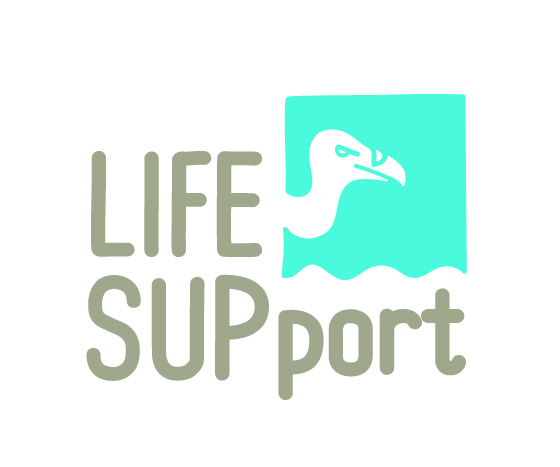
Project 101074212 — LIFE21-NAT-HR-LIFE SUPport
MAIN MESSAGE
Securing a future for Griffon vultures in Croatia
SUMMARY
The project LIFE SUPport aims to improve breeding and survival conditions for the last remaining population of Griffon Vultures (Gyps fulvus) in Croatia, located on the Kvarner Islands. The urgency and need for such a project have been outlined in the expert background document prepared for the currently pending adoption of the Griffon Vulture Management Plan in Croatia. By tackling the most important threats on their breeding grounds, the current population of 110-130 pairs will continue to survive and possibly increase in number, which is an important first step for the species to re-colonize their historical breeding ranges on the Croatian mainland and connect to other populations of Griffon Vultures in the Alps and Balkans. The most important threats targeted by this project are nest disturbance, lack of food, poisoning and electrocution.
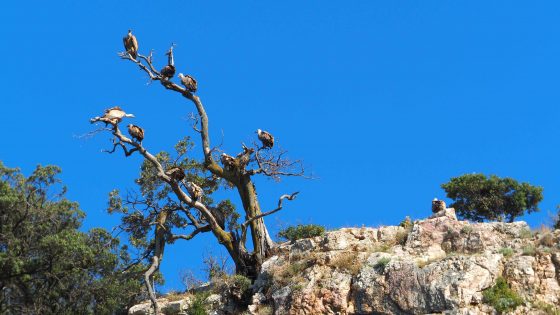
The main objectives are:
- Reducing nestling mortality by minimizing nest disturbance and by improving the rescue and rehabilitation operations of the Beli Rescue Center for Griffon Vultures. 2. Increasing food availability for
vultures by improving and expanding the existing network of managed feeding stations and by increasing natural feeding opportunities. - Prevention of poisoning events by exploring best preventive measures to avoid the use of poisoned baits, by promoting the use of lead-free
ammunition and by capacity building of relevant enforcement agencies for combating illegal wildlife poisoning. - Reducing mortality arising from electrocution by applying appropriate mitigation measures on the most important electrocution hotspots.
- Promoting Griffon Vultures and raising awareness of their threats and needs to local stakeholders, the wider public and government bodies
MAIN PROJECT TOPIC AND CHALLENGES
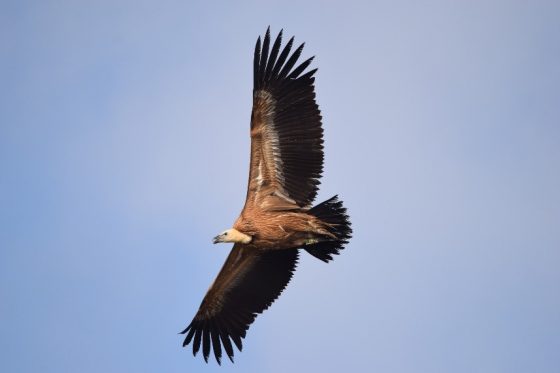
The Griffon Vulture (Gyps fulvus) is a large scavenging bird of prey from the family of Accipitridae. The species is protected by EU Birds Directive Annex I, Bern Convention Annex II, Bonn Convention Annex II, MoU Raptors Annex I under Bonn Convention, CITES Annex II and EU regulation of trade of fauna and flora Annex A.
In Croatia, the Griffon Vulture is named ‘Bjeloglavi Sup’ and the species is considered Endangered (EN) as it disappeared from most of its Croatian breeding range during the 20th century. Formerly the species was breeding from Mount Učka, the Primorje region, Kvarner islands and Mount Velebit to the canyons of certain Dalmatian rivers, the island of Brač, Mount Biokovo and part of the Dubrovnik Littoral. However, with the last breeding pairs disappearing from the Croatian mainland in 2003 (National Park Paklenica), the entire autochthonous population of Griffon Vultures in Croatia is nowadays restricted for breeding to a few islands in the SPA Kvarner islands: Cres, Krk, Prvić and Plavnik. Here the species breeds on cliffs directly above the sea, which is a unique feature,
not observed in any other countries of its breeding range.
The current breeding population is assessed at 110-130 pairs and it forms the connection between the breeding populations of the Alps (Italy) and those of the Balkans (e.g. Serbia). Even though the population is currently considered stable, the species faces multiple threats in the area which could all together could have detrimental effects on its small population size. An example of this is an unintentional poisoning event that took place on the island of Rab in 2004, where 21 Griffon Vultures got killed because of consuming poisoned bait which was intended for Golden Jackals. Other problems the species faces range from lack of food (due to a ongoing decrease in extensive sheep farming and livestock breeding on the islands) to accidents (electrocution; collisions with power
infrastructure), disturbance at their breeding colonies and indirect poisoning via lead. Therefore, in order to secure truly stable breeding conditions for the species and support a future recolonization of the mainland, it is important to tackle the major threats at the last remaining breeding ground urgently and at the same time, which is exactly what LIFE SUPport intends to do.
Furthermore, Griffon Vulture can be seen as sort of an umbrella-species, because tackling its threats also increases the well-being of several other bird species in the area. Mitigating electrocution risk, for instance, will benefit breeding and wintering species such as Golden Eagle (Aquila chrysaetos), Short-toed Eagle (Circaetus gallicus), Eagle Owl (Bubo bubo), Tawny Owl (Strix aluco), Common Buzzard (Buteo buteo), Hen Harrier (Circus cyaneus), Kestrel (Falco tinnunculus) and Lesser Kestrel (Falco naumanni). Preventing nest disturbance is going to positively affect other cliff-breeding species like Golden Eagle (Aquila chrysaetos), Peregrine Falcon (Falco peregrinus), European Shag (Phalacrocorax aristotelis desmarestii) and Raven (Corvus corax). Similarly, reducing poisoned baits and lead in the environment is going to benefit pretty much all above-mentioned raptors, owls and corvids.
PROJECT AREA
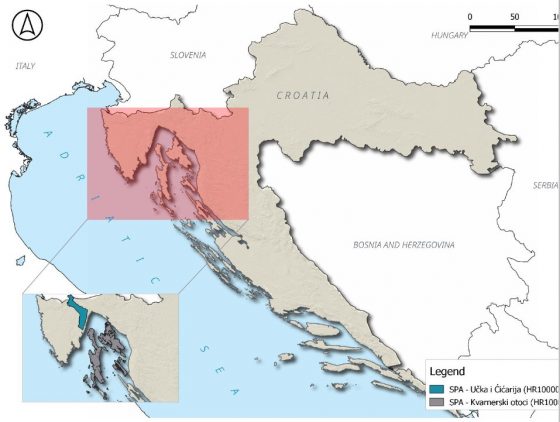
KVARNER ISLANDS
The area is located in the Northern Adriatic and encompasses several large islands (Cres, Krk, Rab and part of Lošinj), and surrounding smaller islands. The exact land ownership is unknown and is currently being mapped. The area has no dominant habitat type, but several different habitats with fairly similar coverage. The largest one is broad-leaved deciduous woodland (20,67%, habitat code N16); followed by heath, scrub, maquis and garrigue, phrygana (16,87%, habitat code 08); marine areas, sea inlets (14,16%, habitat code N01); dry grassland, steppes (13,89%, habitat code N09); other arable land (12,21%, habitat code N15); inland rocks, screes, sands, permanent snow and ice (8,56%, habitat code N22); mixed woodland (4,2%, habitat code N19); coniferous woodland (3%,
habitat code N17); shingle, sea cliffs, islets (2,83%, habitat code N05); non-forest areas cultivated with woody plants (1,79%, habitat code N21); other land (0,8%, habitat code N23); inland water bodies (0,55%, habitat code N06); extensive cereal cultures (0,4%, habitat code N12); coastal sand dunes, sand beaches, machair (0,04%, habitat code N04); and bogs, marshes, water fringed vegetation, fens (0,03%, habitat code N07).
In the project area there are a lot of tourist activities, mostly concentrated near the inhabited areas and marine areas.
Cres, Krk and Rab are the largest islands of the project area, sized 405.7 km2, 405.22 km2 and 102.6 km² respectively. Important habitat for vultures and raptors is extensive open and mixed landscapes (dry grasslands). The sea cliffs in the area are used by Griffon Vultures for breeding, representing the entire Croatian national breeding population.
Apart from being a Natura 2000 site, the SPA includes several areas with additional conservation status. These are Natural monument Oak in Sv. Petar, two ornithological Special reserves Fojiška-Podpredošcica and Mali bok-Koromacna, Special reserve of forest vegetation Glavotok and Košljun, ornithological Special reserves Glavine-Mala luka, botanical-zoological Special reserve Prvic and Grgurov kanal, Significant landscape Lopar, Special reserve of forest vegetation Dundo and Forest Park Komrcar. All four ornithological reserves are important breeding sites for Griffon Vultures.
In fact, the coastal cliffs from Cape Glavina to the cove of Mala Luka on the island of Krk, proclaimed an ornithological reserve in 1969, was the first bird reserve in the world whose primary goal was the protection of Griffon Vultures. Later on, the island of Prvić in 1972, and two cliff locations on the eastern side of Cres in 1986 were proclaimed as well. The reserve in the northeastern part of the island of Cres stretches from the cove of Fojiška to the cove of Pod Predošćica, whereas the southeastern reserve encompasses the coastal area from the cove of Mali Bok to the cove of Koromačna. In these four special reserves, the use of the space and also the activities carried out must be aimed exclusively at the preservation of the natural phenomena for which the reserve was proclaimed. This means that no interventions or activities are allowed which could endanger them.
Even though the majority of Griffon Vultures nests within these reserves, some important nesting sites are located elsewhere in the SPA, most notably the colony of vultures that regularly nest on the cliffs of the island of Plavnik.
Apart from vultures, the SPA Kvarner islands also holds other important populations of raptors: Lesser Kestrel (100% of national population), Golden Eagle Aquila chrysaetos (12%), Short-toed Snake-Eagle Circaetus gallicus (11%) and Peregrine Falcon Falco peregrinus (12%). The SPA is also important for other bird species, most notably Eurasian Stone-curlew Burhinus oedicnemus (100% of national population), Short-toed Lark Calandrella brachydactyla (15%), European Shag Phalacrocorax aristotelis desmarestii (22%), Little Tern Sterna albifrons (20%) and Common Tern Sterna hirundo (11%). Furthermore, SPA Kvarner islands contains 24% of national wintering population of Sandwich Tern sandvicensis and 12,5 % of Black-throated Loon Gavia arctica, while
the wet grasslands on Krk Island are used by migratory Common Crane Grus grus.
UČKA AND ĆIĆARIJA
The exact land ownership is unknown and is currently being mapped. The site consist predominantly of broad-leaved deciduous woodlands (53,97%, habitat code N16); followed by mixed woodlands (10.44%, habitat code N19); dry grassland, steppes (10.78%, habitat code N09); heath, scrub, maquis and garrigue, phrygana (10.25%, habitat code N08); other arable land (4.89%, habitat code N15); coniferous woodlands (4.5%, habitat code N17); extensive cereal cultures (including rotation cultures with regular fallowing) (4.28%, habitat code N12); inland rocks, screes, sands, permanent snow and ice (0.54%, habitat code N22); and other land (including towns, villages, roads, waste places, mines, industrial site) (0.35%, habitat code N23).
There is extensive livestock farming (mostly sheep) and traditional agriculture in the populated part of the protected area, which is declining due to emigration of local people. There is not a lot of tourist activities, but there are several restaurants and hunting and mountain lodges. There is a relatively small amount of forest logging in the area, with only 1.59% harvested of the total wood supply of 1 134 321 m3.
Importance of the project area for biodiversity and/or for the conservation of the species /habitat types targeted at regional, national and EU level (give quantitative information if possible)
Justify why you have selected this particular area for your project. Explain why your choice is the most appropriate to reach the project’s objectives.
Mountains Učka and Ćićarija are situated on the northeast area of Istria peninsula called White Istria because of domination of limestone, less flysch zones. Due to its relief, proximity to the sea but also spreading deeply in to the continent, the area is characterized by a particular mixed continental and Mediterranean climate and development of different kind of habitats (forest, open area, meadows partly in succession, rocks etc.) important for ornithofauna.
The site includes significant landscape Učka-North part, Učka Nature Park with geomorphological natural Monument Vela Draga and partly significant landscape Lisina. This area has many ponds, torrential flows that create valleys (Mošcenicka draga, Lovranska draga, etc.) and canyons (Vela draga), sensitive limestone habitats and pits important for some steno-endemic species like: Croatodirus bozicevici, Campanula tommasiniana and relict Lacerta horvathi.
With regard to the the ornithofauna, SPA Učka i Ćićarija holds important populations of raptors: Golden Eagle Aquila chrysaetos (12% of national population), Short-toed Snake-Eagle Circaetus gallicus (3.6%) and Peregrine Falcon Falco peregrinus (2.5%). The SPA also holds 8.6% of national breeding population of Ortolan Bunting Emberiza hortulana. Until the 1970s the SPA hosted a breeding colony of Griffon Vultures Gyps fulvus, but these days the area is only used as a feeding site and regular fly-over area for individuals coming from the Kvarner islands. Exactly for this reason, a supplementary feeding station with observatory was built in the Učka Nature Park in 2017.
| Project duration | 1.1.2023. – 31.12.2027. |
| Project budget | 2 159 589.61 €
1 295 751.00 – maximum grant amount |
| Project co-financed by | European Union, EU LIFE programme |
PROJECT PARTNERS
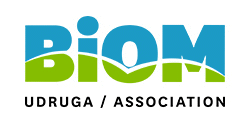
- Udruga BIOM (Udruga BIOM), PIC 948167823, Čazmanska 2, Zagreb 10000, Hrvatska
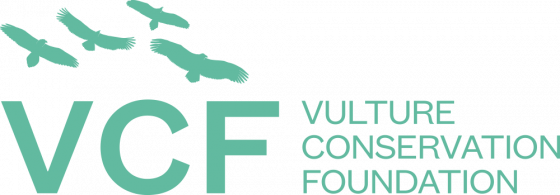
- Stichting the Vulture Conservation Foundation (Vulture Conservation Foundation), PIC 905576384, Antoon van Hooffplein 1, Arnhem 6816 SH, Netherlands
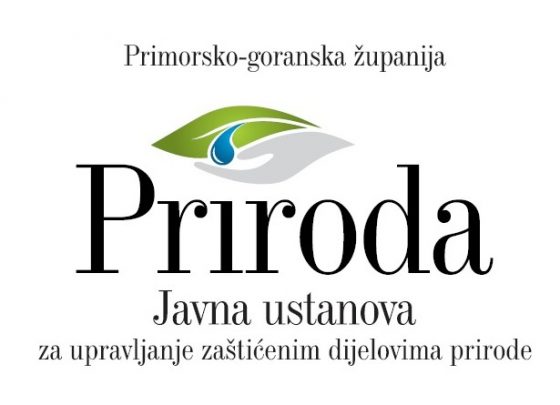
- Javna ustanova Priroda (Javna ustanova “Priroda”), PIC 904537611, Grivica 4, 51000 Rijeka, Hrvatska
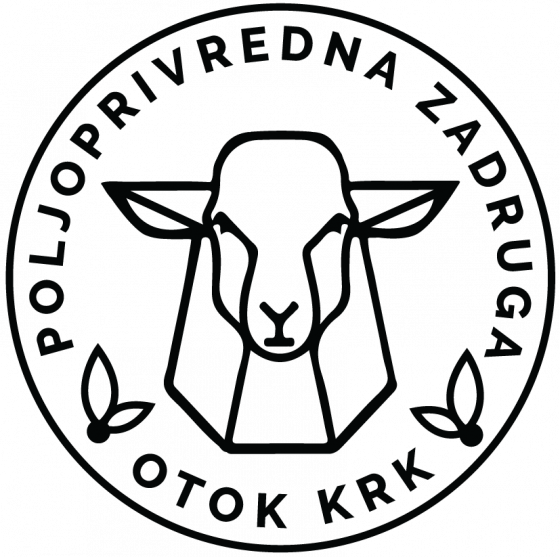
- Poljoprivredna zadruga Otok Krk (PZ otok Krk), PIC 890828407, Trg bana Josipa Jelačića 5, 51500 Krk, Hrvatska

- HEP-OPERATOR DISTRIBUCIJSKOG SUSTAVA DOO ZA DISTRIBUCIJU I OPSKRBU ELEKTRICNE ENERGIJE D.O.O. (HEP-ODS d.o.o.), PIC 955030476, Ulica Grada Vukovara 37, 10000 Zagreb, Hrvatska
PRIDRUŽENI PARTNER
- Uprava za zaštitu prirode Ministarstva gospodarstva i održivog razvoja, Radnička cesta 80/7, 10 000 Zagreb, Hrvatska




